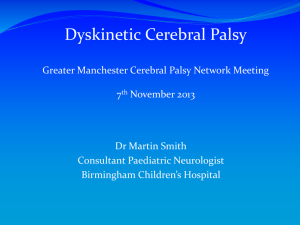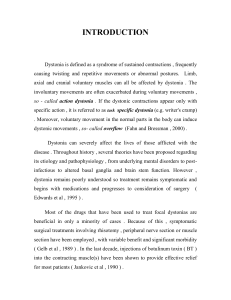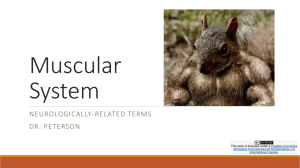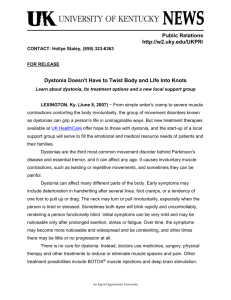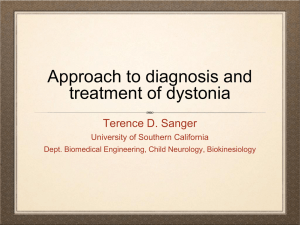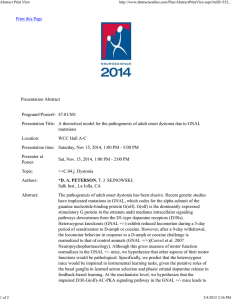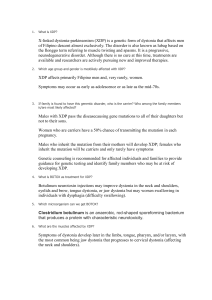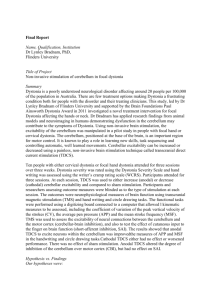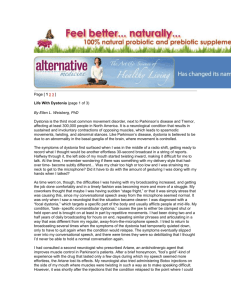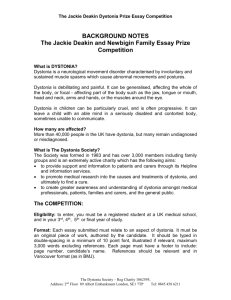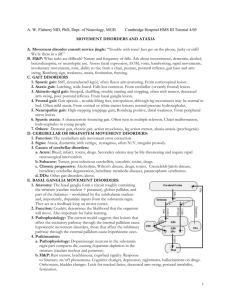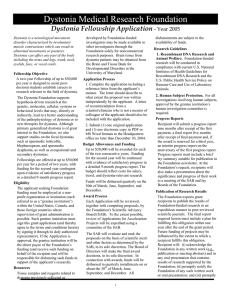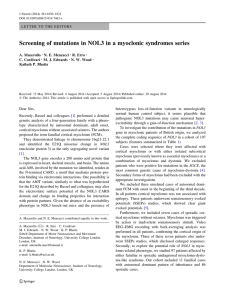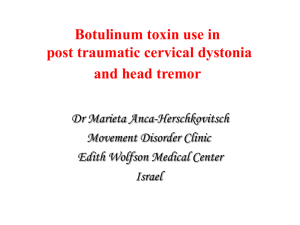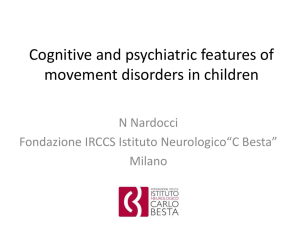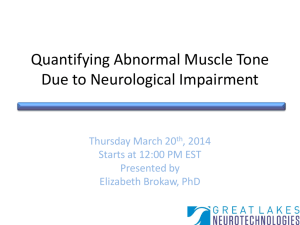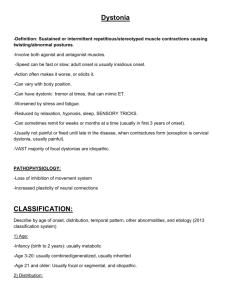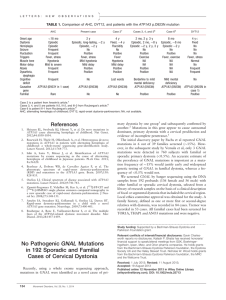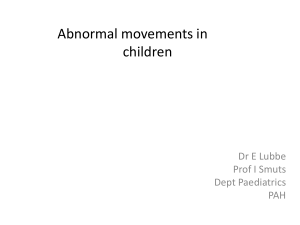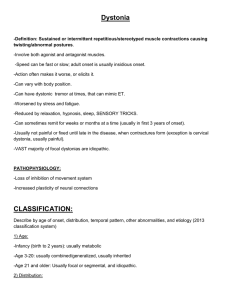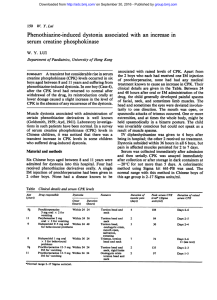cardiovascular contributions to neurological
advertisement
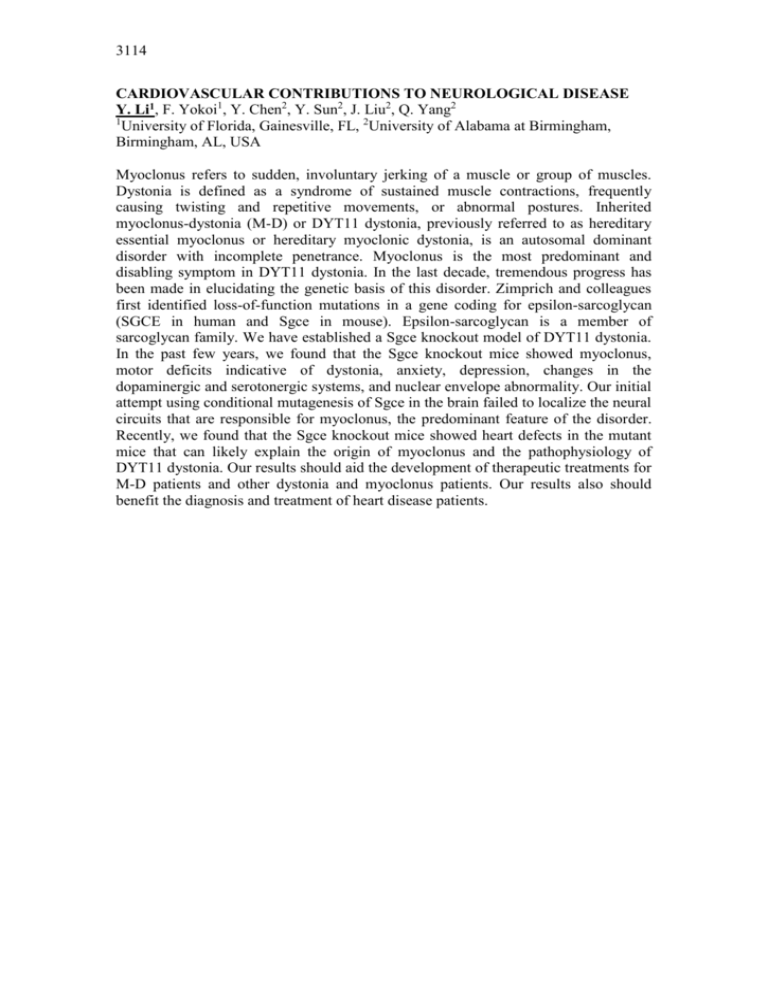
3114 CARDIOVASCULAR CONTRIBUTIONS TO NEUROLOGICAL DISEASE Y. Li1, F. Yokoi1, Y. Chen2, Y. Sun2, J. Liu2, Q. Yang2 1 University of Florida, Gainesville, FL, 2University of Alabama at Birmingham, Birmingham, AL, USA Myoclonus refers to sudden, involuntary jerking of a muscle or group of muscles. Dystonia is defined as a syndrome of sustained muscle contractions, frequently causing twisting and repetitive movements, or abnormal postures. Inherited myoclonus-dystonia (M-D) or DYT11 dystonia, previously referred to as hereditary essential myoclonus or hereditary myoclonic dystonia, is an autosomal dominant disorder with incomplete penetrance. Myoclonus is the most predominant and disabling symptom in DYT11 dystonia. In the last decade, tremendous progress has been made in elucidating the genetic basis of this disorder. Zimprich and colleagues first identified loss-of-function mutations in a gene coding for epsilon-sarcoglycan (SGCE in human and Sgce in mouse). Epsilon-sarcoglycan is a member of sarcoglycan family. We have established a Sgce knockout model of DYT11 dystonia. In the past few years, we found that the Sgce knockout mice showed myoclonus, motor deficits indicative of dystonia, anxiety, depression, changes in the dopaminergic and serotonergic systems, and nuclear envelope abnormality. Our initial attempt using conditional mutagenesis of Sgce in the brain failed to localize the neural circuits that are responsible for myoclonus, the predominant feature of the disorder. Recently, we found that the Sgce knockout mice showed heart defects in the mutant mice that can likely explain the origin of myoclonus and the pathophysiology of DYT11 dystonia. Our results should aid the development of therapeutic treatments for M-D patients and other dystonia and myoclonus patients. Our results also should benefit the diagnosis and treatment of heart disease patients.
